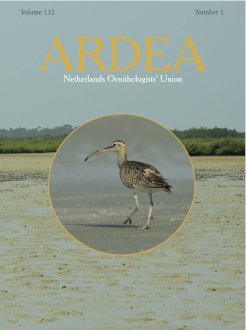Grassland breeding waders are in strong decline in most agricultural habitats across Western Europe. Studies evidencing the negative effects of agricultural practices on wader populations are numerous, but even in most specially managed areas the decline cannot be reversed. Earlier studies have shown that predation of nests and chicks occurs frequent, and that current predator densities can add to the decline and/or prevent recovery. In this study we experimentally study the effect of different intensities of predator control of Red Fox Vulpus vulpes, Beech Marten Martes foina, Badger Meles meles, Pine Marten Martes martes, Polecat Mustela putorius, Stoat Mustela erminea, Raccoon Procyon lotor and Raccoon Dog Nyctereutes procyonoides on nest predation and chick survival of the Black-tailed Godwit Limosa l. limosa at lake Dümmer, Lower Saxony, Germany. The area was subdivided in two subareas (Ochsenmoor and Osterfeiner Moor), between 2009–2017 343 nests were monitored. Normal predator control was implemented in both subareas in 2009 and 2010; during these years nest survival was low. From 2011 until 2017 intensified year-round predator control was implemented in Ochsenmoor and from 2016 also in Osterfeiner Moor. From 2011 until 2015 nest survival was relatively higher in the subarea with intensified predator control (Ochsenmoor). In 2016 and 2017 predators were intensively controlled in both subareas and nest survival was similarly high in both. From 2009 until 2017 chick survival was measured using radiotelemetry on 243 chicks. Generally, we found that in the subarea with intensified predator control, chick survival was higher. Combining the estimates of nest and chick survival, we estimate that godwit pairs raised between 0.97–1.12 fledglings per season under an intensive predator control regime and only 0.09–0.18 fledglings when predators were hunted at a normal level. As godwit pairs need to produce around 0.6 fledglings per year to sustain their population, the intensified predator control in this study-area has contributed to the recent increase in the breeding population. Our results thus show that the impact of mammalian predators on the breeding productivity of godwits can be reduced by intensified predator control. The intensified control of the targeted ground predators in this subarea could have resulted in increasing densities of unhunted predators, which subsequently could reduce nest or chick survival. Within the timespan of this experimental study, we did not observe a decrease in nest/chick survival that could hint at this meso-predator release.
How to translate text using browser tools
28 March 2024
The Effect of Different Mammalian Predator Management Regimes on the Reproductive Success of Black-Tailed Godwits Limosa limosa limosa
A.H. Jelle Loonstra,
Nadja Hofmann,
Bettina Hönisch,
Johannes Melter,
Marcel Holy,
Christiaan Both,
Heinrich Belting
ACCESS THE FULL ARTICLE

Ardea
Vol. 112 • No. 1
March 2024
Vol. 112 • No. 1
March 2024
Black-tailed Godwit
chick survival
nest survival
predator management





